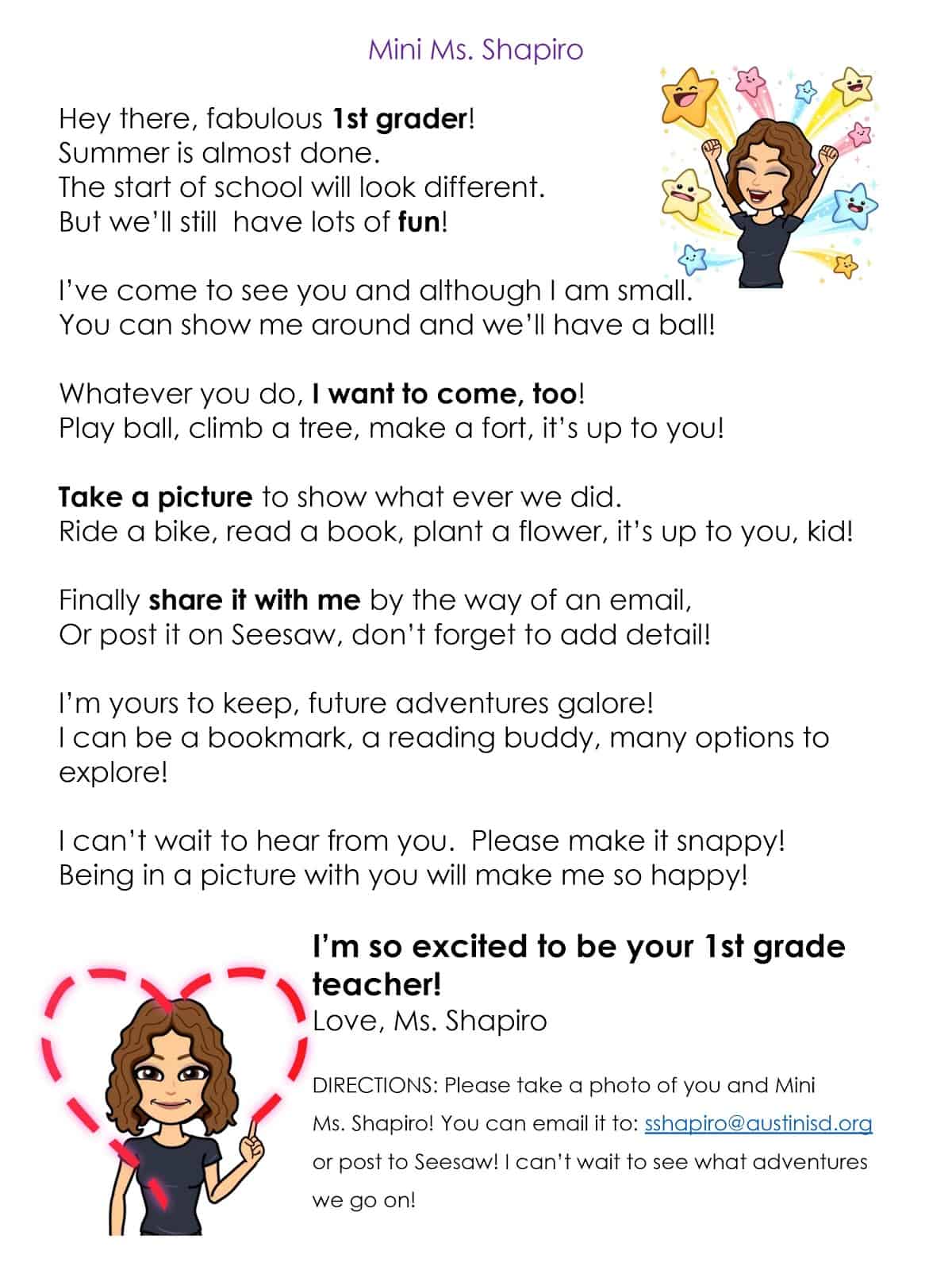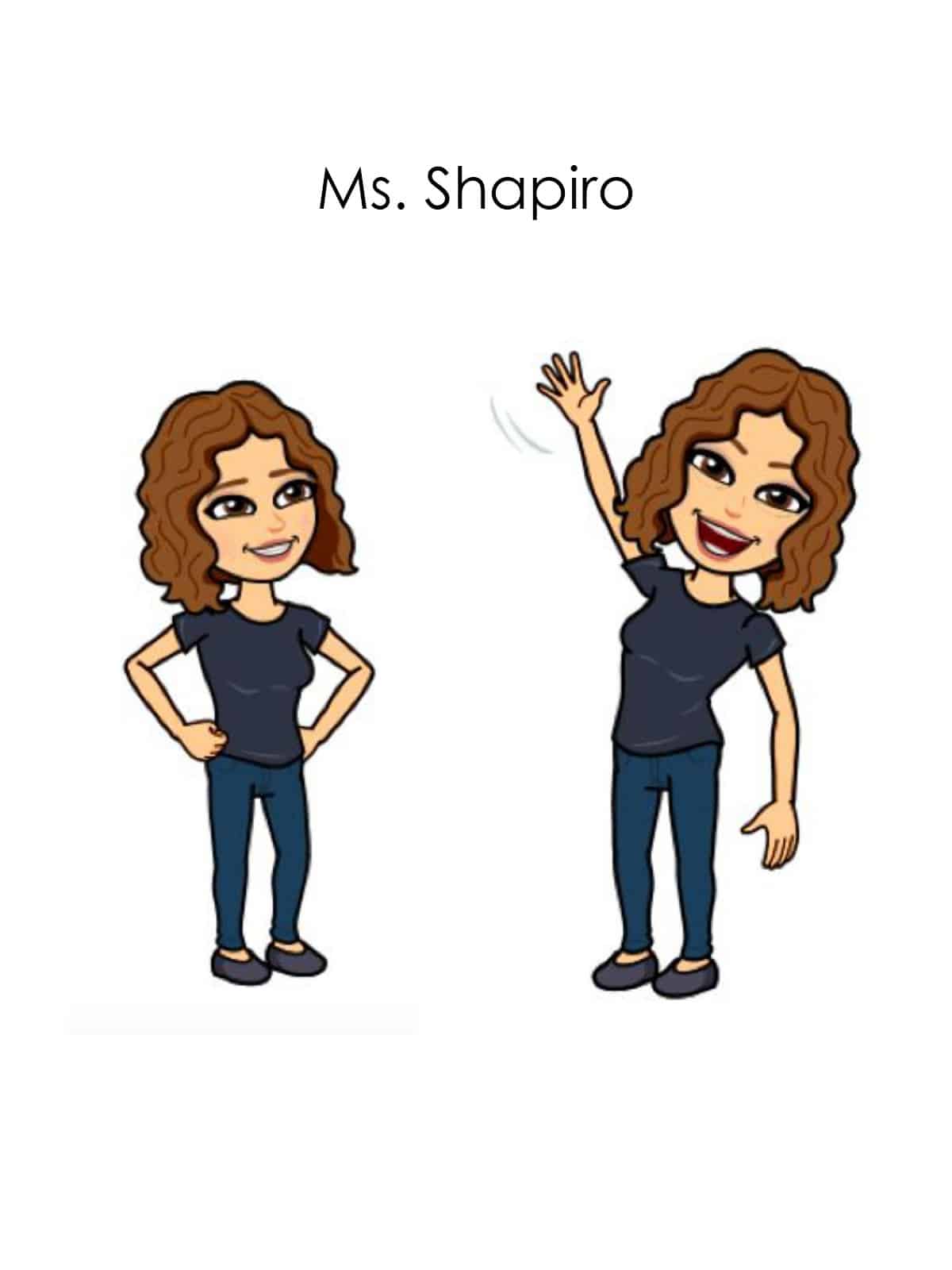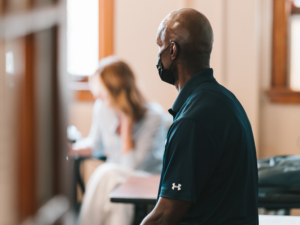Teaching Through Change, Stories of Resilience: Austin ISD

Teachers across the nation are navigating a new normal and first-grade teacher Ms. Stacey Shapiro, of Austin Independent School District (AISD) in Austin, Texas, is no exception. AISD is a member of The Learning Accelerator’s Strategy Lab cohort, a network of seven districts that are planning for resilient and equitable futures, both in return-to-school preparations in response to COVID-19 and in seeking long-term sustainable change beyond the pandemic.
Shapiro has adapted to the change by becoming her own version of “Flat Mini Ms. Shapiro,” based on the famed literary character Flat Stanley. “Flat Mini Ms. Shapiro” is showing her students how to persevere through any adventure, no matter the obstacle, by focusing on her relationships with students and peers and taking time for self-care.
Build Positive Relationships: Students
As a 23-year teaching veteran, Shapiro understands the importance of personal relationships between teachers and students and among peers for creating a positive learning environment – even if virtual. “Relationships can only exist when there is trust. Having trust between the two of you, the teacher and the student, means that students are willing to try harder things. It means they are willing to think outside the box and learn to love school for themselves.”
Recognizing that relationship building would look different in a remote environment this school year, Shapiro spent the summer creating a toolkit for her students that would help them get to know each other. “I wanted fall to go smoothly so I sent students a Flat Mini Ms. Shapiro [a paper cutout of her] that allowed students to take pictures with the Mini Shapiro and send them to me. It was a great way for them to share their world with me.”
Creating Your Own “Flat Mini Ms. Shapiro”
- Print out and laminate a colorful, flat version of yourself on cardstock
- Use the “Flat Mini You” to attach to flyers, activity kits, invitations, and more to increase engagement
- Invite students to take pictures with the “Flat Mini You” and send them to you via email, Seesaw, or your favorite learning platform


In addition, Shapiro also sent home a BINGO card that allowed students to show the things around their home and a mini-movie trailer to start building relationships.
Prior to COVID, Shapiro infused her love for being active with walks around the track with the students. Since the new socially distance measures, Shapiro has built connections with them by building a mini-track for her in-person students where they all run together on Fridays. To ensure that everyone, in and outside of the class feels connected, she incorporates time in the schedule for students to simply be social. “Every day, I start class with a 20 minute morning meeting to create space for each student to share and I have an activity focused on class community-building. We are on Zoom for two hours and it is important to make time for kids to tell me about their new puppy or Halloween costume and to remember that they recently had a soccer game that I need to ask them about. It’s nice to give time in the morning and afternoon for class meetings” said Shapiro.
Building Positive Relationships: Peers
Relationships are key and regardless of in-person, virtual, or something in between, teachers know they can’t do it alone this year. Just as student relationships are critical to an effective learning environment, so too are teacher-to-teacher relationships in creating a successful school. Now more than ever, teachers deeply need strong peer support. One mechanism for this is through Professional Learning Communities (PLCs). Districts are leaning on teacher leaders like Shapiro during this unique time to help new and experienced teachers adapt to new realities and instructional challenges.
When Shapiro was asked to create her “Lessons from the Field” series around getting started with distance learning for the first-grade teachers of AISD, she focused on giving them a starting point and access to immediate resources. “I loved getting to know and working with my peers. Since starting the series, so many teachers have reached out and want to continue. I am able to teach them and they teach others. It’s a joy to share what I’m doing and teachers share back ideas and resources with me. I’m so happy to help so many teachers, and in turn, students,” said Shapiro.
As a base to get teachers started, she used tools such as Google Docs, SeeSaw, and Canvas, created best practices for curriculum infused with community building, and developed virtual PLC sessions that allowed teachers to have voice and choice for sessions. In her training, she helped teachers to understand that although everything can’t be replicated in an online environment, curriculum and connections could still be authentic and engaging
Building Positive Relationships: Self
Through her work as a teacher leader and classroom instructor, Shapiro knows first hand how stressful teaching this year has been. She shares her self-care tips with her peers:
- Have socially distant meals with coworkers
- Focus on a healthy work/life balance
- Organize your must-dos and may dos – then prioritize
- Make exercise a priority to create a space to think and breathe
- Set routines and schedules
- Engage your passions (Ms. Shapiro’s is teaching a running class and training her kids to be marathon runners)
By building strong relationships with students, being an active member of a strong teacher community, and taking time for herself, Shapiro is making the most of this time of change. Although she doesn’t get to travel right now to amazing lands like Flat Stanley, “Flat Mini Ms. Shapiro” works tirelessly to create personalized and engaging educational spaces for students and help other teachers to become AISD heroes. The changes being made by Ms. Shapiro and other AISD educators will create district-wide progress and allow the system to better meet the needs of all students.
Additional Resources:
- How Can Blended Learning Work in a Remote Setting?
- The Learning Accelerator’s grab and go training sessions on remote instruction
- Today’s One Thing for Leaders: Connecting Remotely
- Today’s One Thing for Teachers: Building Connections
For more, see:
- Hybrid Instruction Creates More time for Formative Assessments
- Why Mentorship Matters
- Focusing on Feedback: A Conversation with Amy Tapper and Patrick Flynn About Supporting Educators During Distanced Teaching
Stay in-the-know with innovations in learning by signing up for the weekly Smart Update.
This post includes mentions of a Getting Smart partner. For a full list of partners, affiliate organizations, and all other disclosures, please see our Partner page.








0 Comments
Leave a Comment
Your email address will not be published. All fields are required.